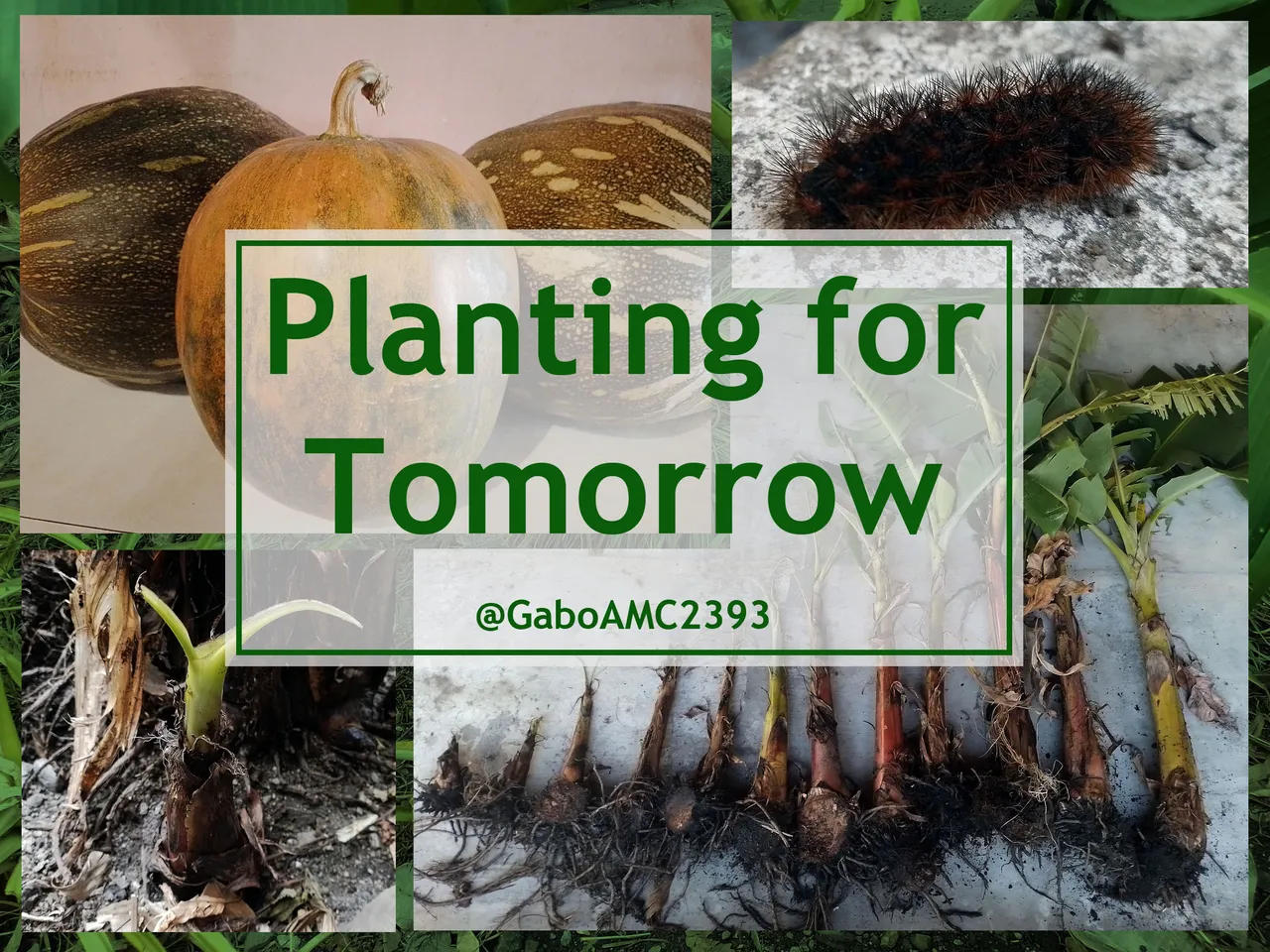

Relatively recently I showed you some of the harvest I had managed to gather. Among the things I managed to harvest I mentioned a good bunch of bananas, a bunch of cassava and some small garlic.
You can read more about this publication by following this link:
@gaboamc2393/cleaning-and-harvesting
Recently I also harvested 3 huge pumpkins, known in my country as Auyama. They are very tasty vegetables that can be used for different recipes. This year they did very well so I am happy with my harvest and plan to continue planting.
 |  |
|---|
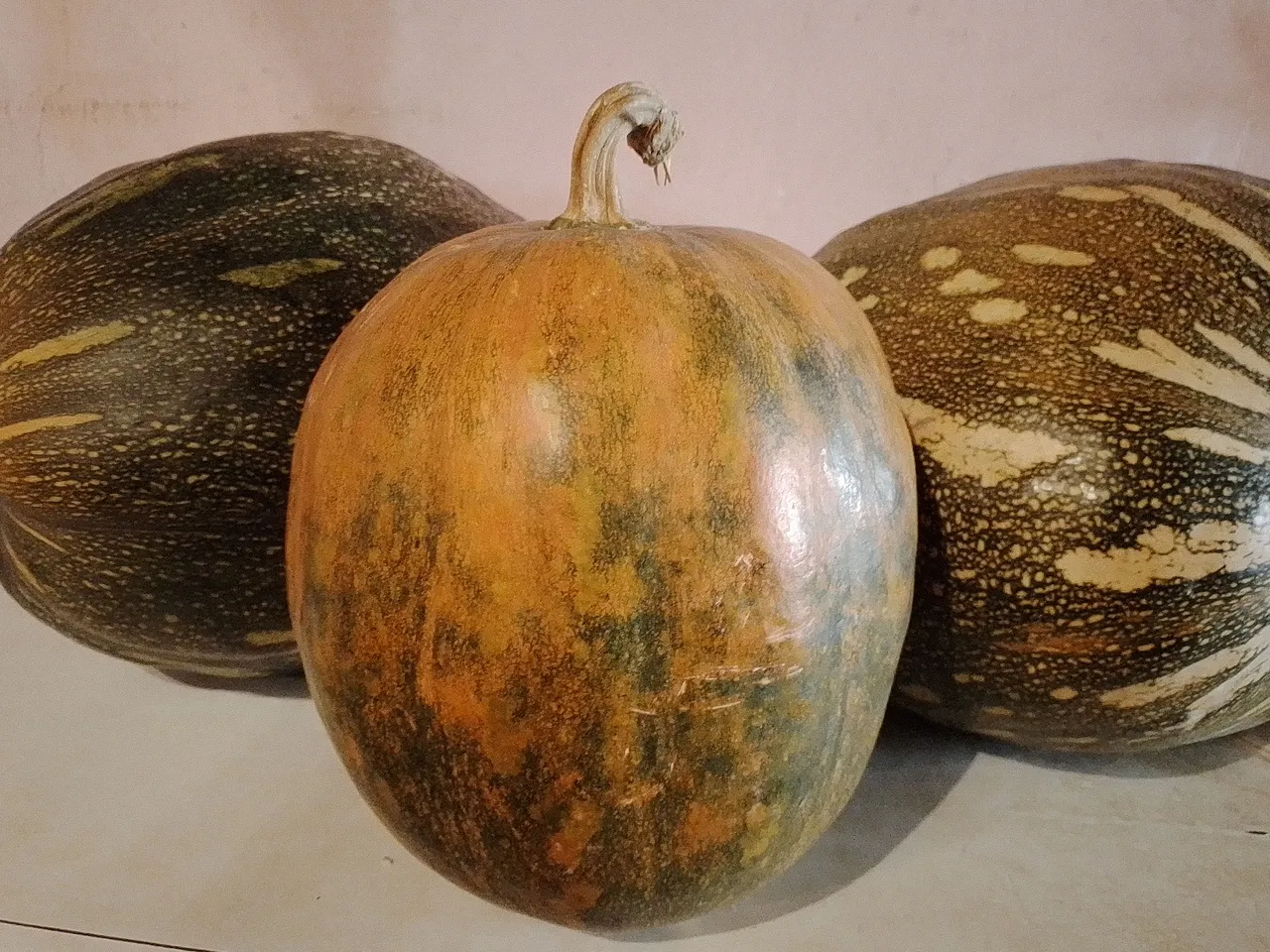
Something that I also had to reproduce were the different varieties of bananas that I had in my backyard.
These huge plants reproduce from small shoots that come out of the ground, very close to the root of the mother plant. Below you can see two small offspring that came out.
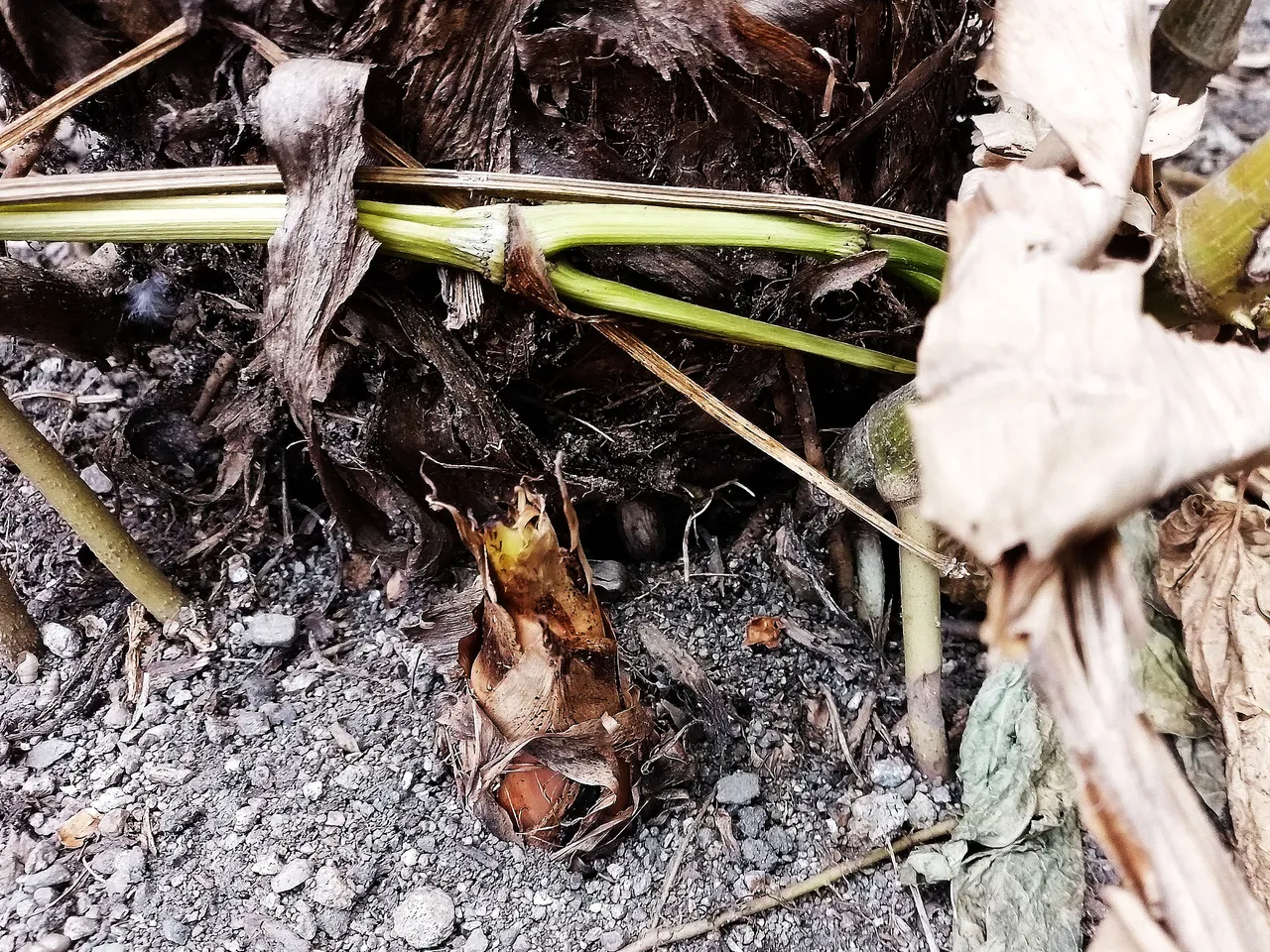 | 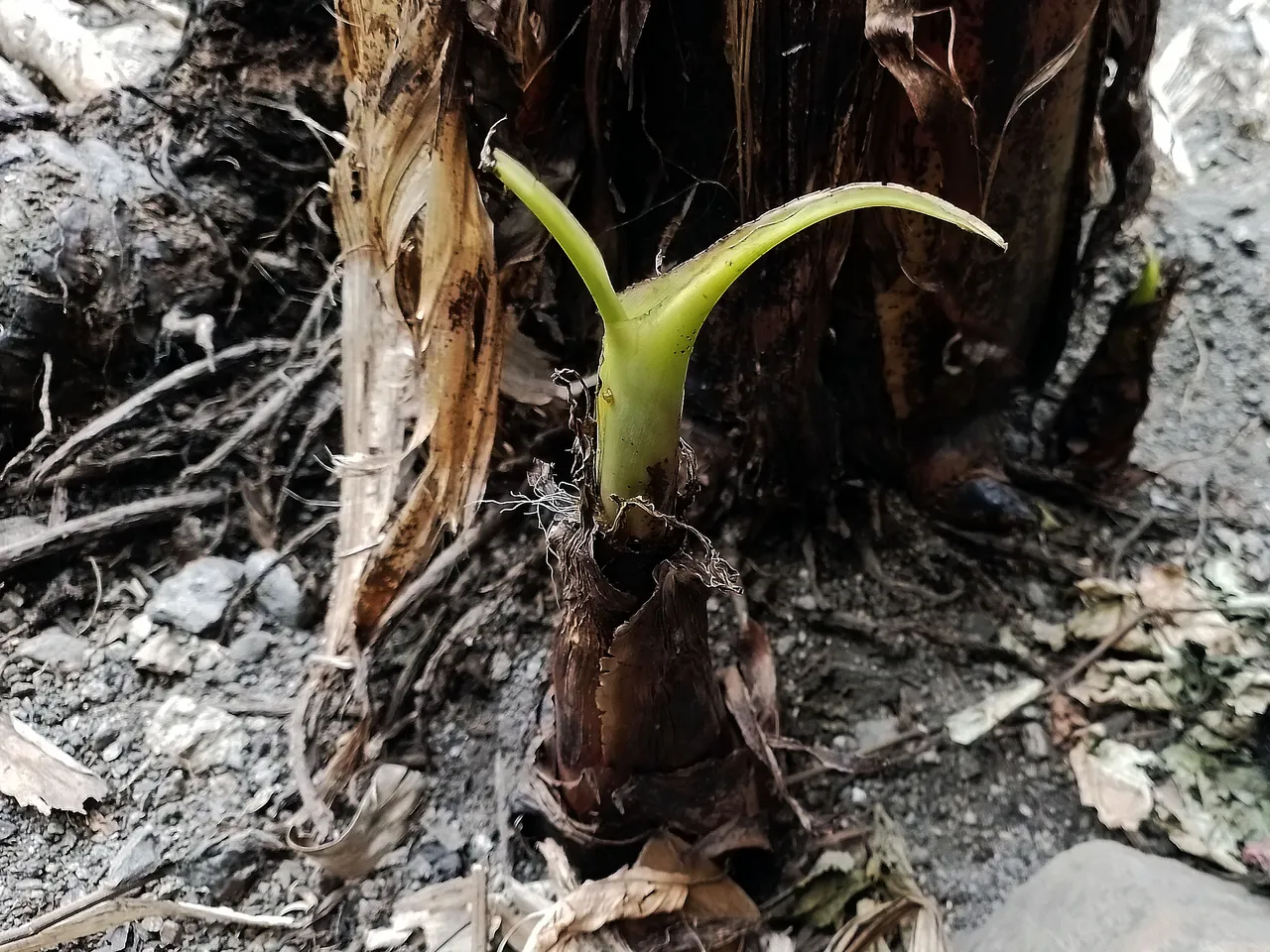 |
|---|
These offspring will eventually grow into banana plants, but if they are not separated from the mother plant, they will compete for nutrients in the soil and will not allow the mother plant to bear good fruit.
Therefore, it is advisable to remove the unnecessary offspring and replant only those that can be replanted, so that there will be a harvest for the next cycle.
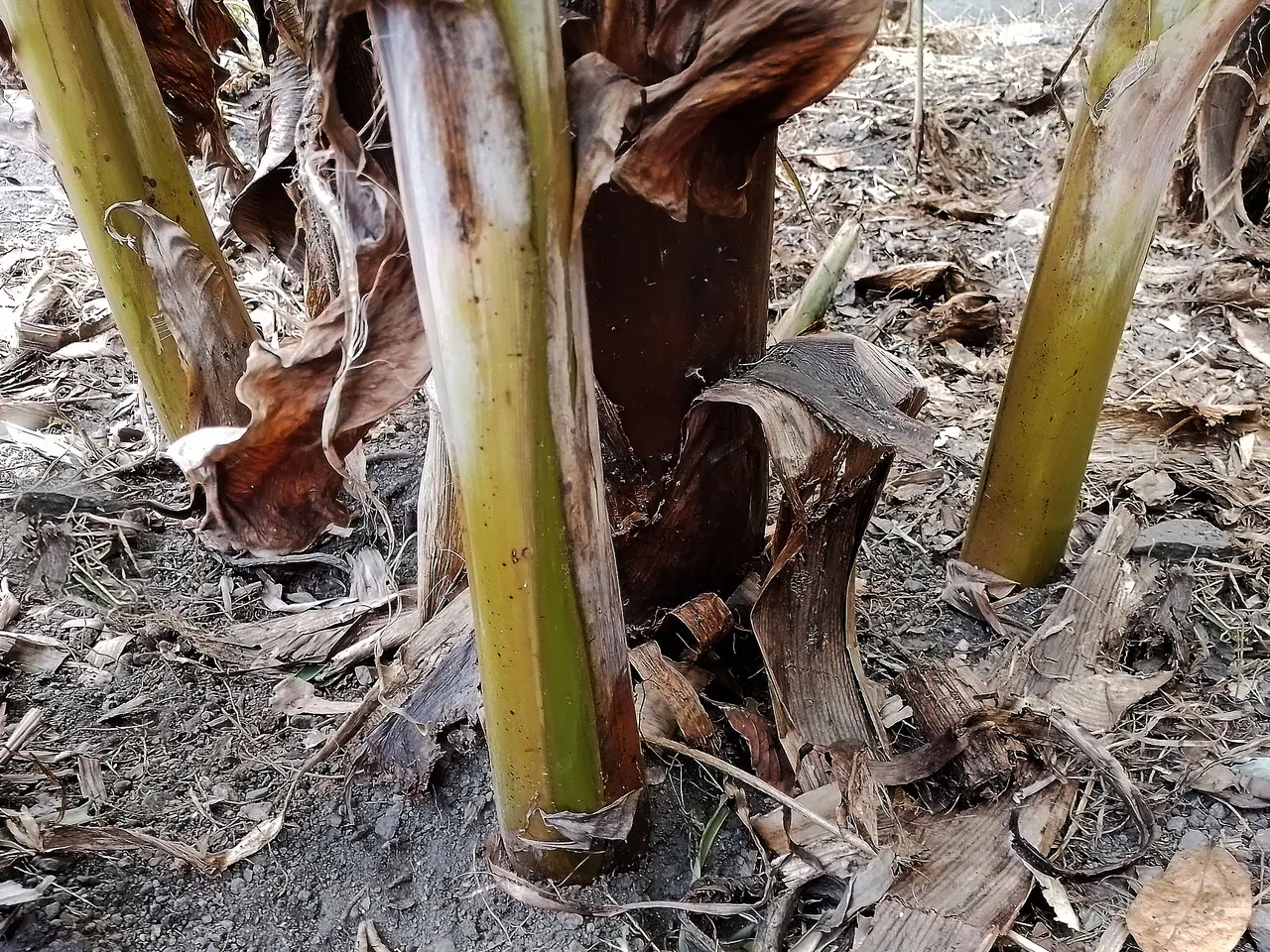 | 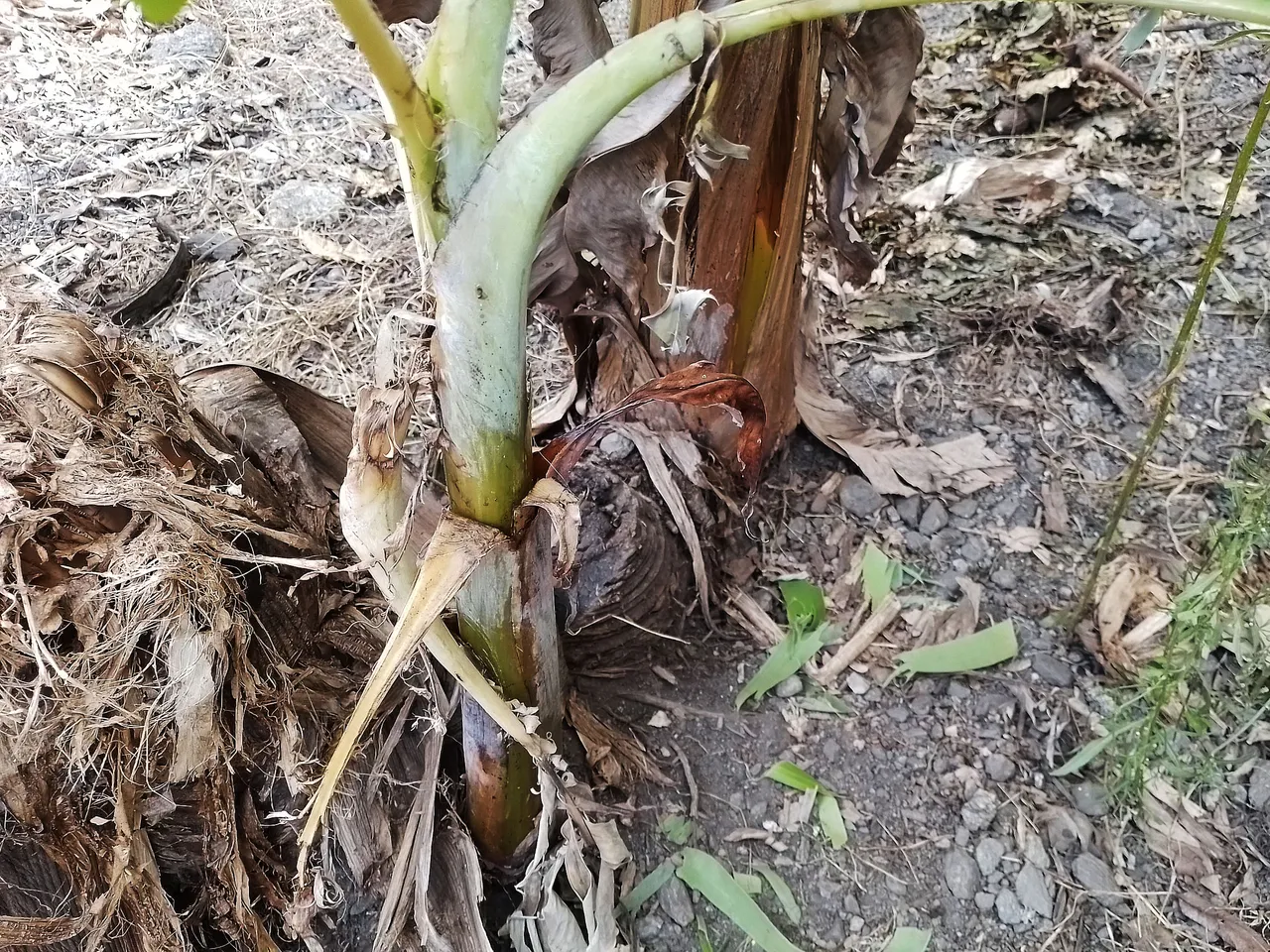 |
|---|
In my case I removed more than 20 offspring from my plants. Some I discarded and others I prepared for planting.
In this case, I only selected 12 to reseed throughout my yard, to maintain continuous production. I hadn't done so because it hadn't rained, so the morning after the first rain of the last few days, I removed all those sprouts.
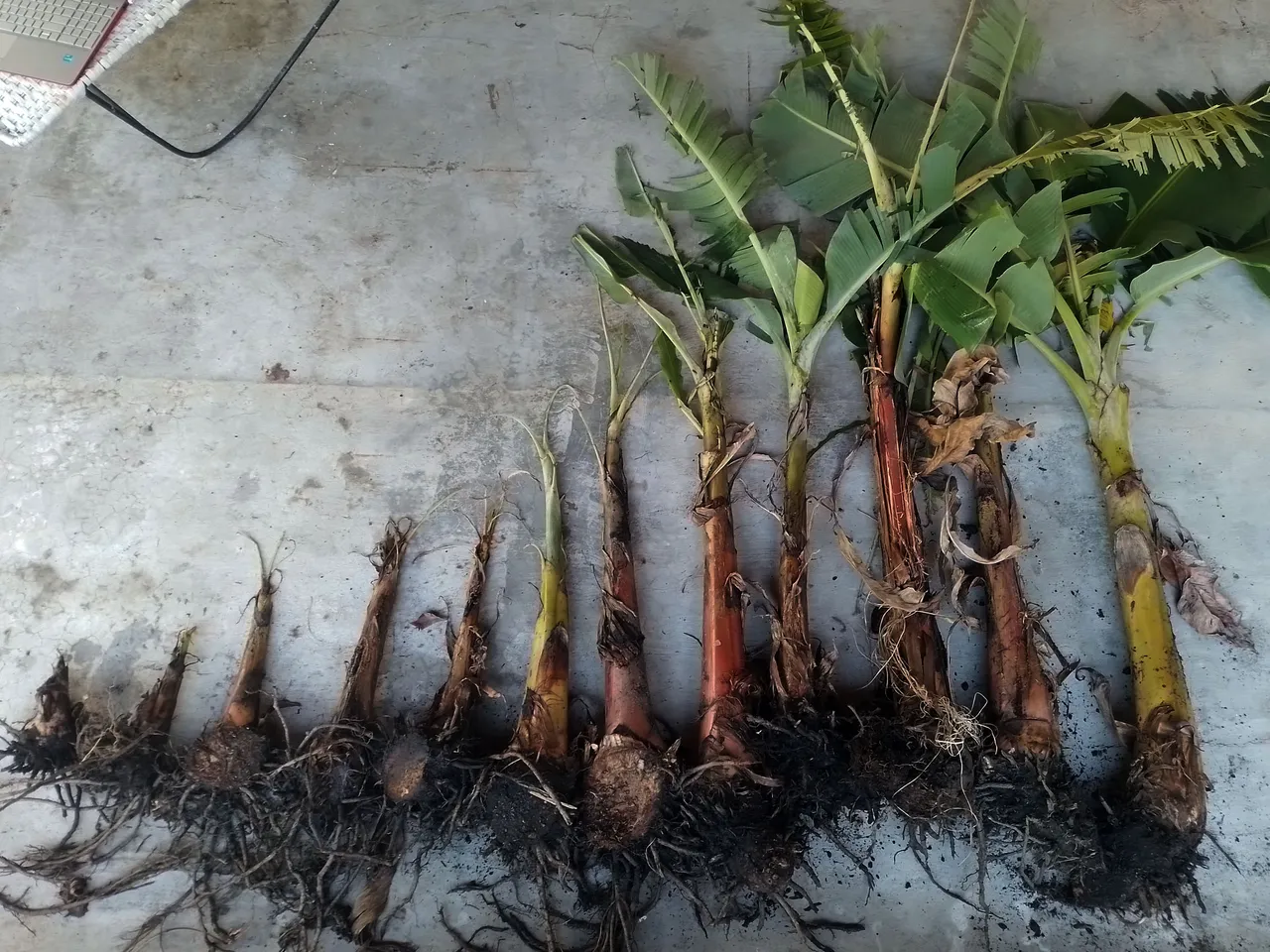
Here is a brief digression on something to keep in mind when working around banana plants.
These plants tend to attract a lot of worms and insects that can be harmful.
In this case, I found several of these worms with barbs along their bodies. They are not small, but if you touch them you will get a terrible fever, which will prevent you from working in the garden, so be very careful with the insects they find.
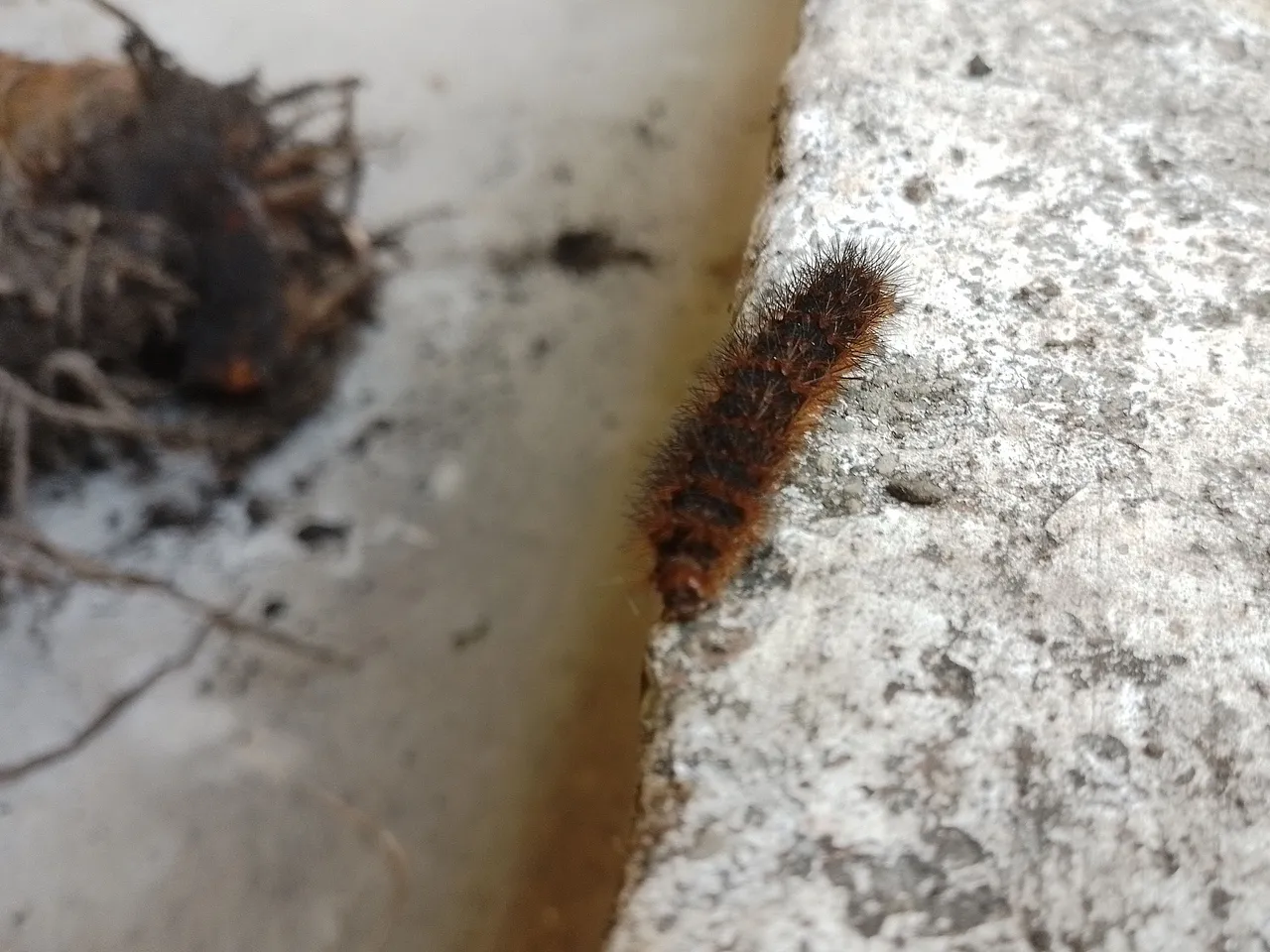 |  |
|---|
Back to planting, after preparing all the banana saplings, I made holes in the soil to plant them. They should be deep, so that the plant can take good roots and grow strong.
I sowed the different types of seedlings, both small and large. In this case, being a small sprout, it will take longer to grow than other offspring.
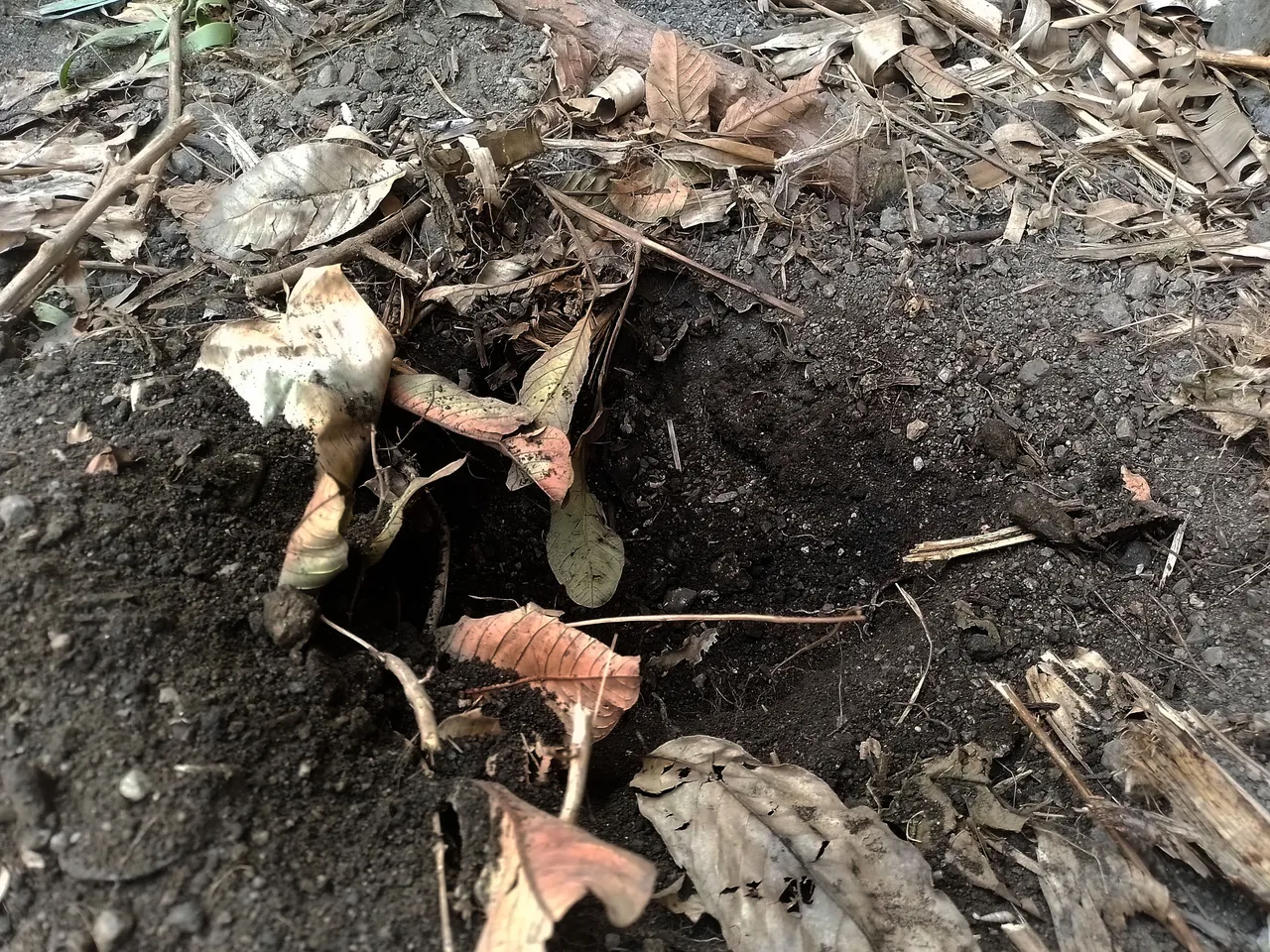 | 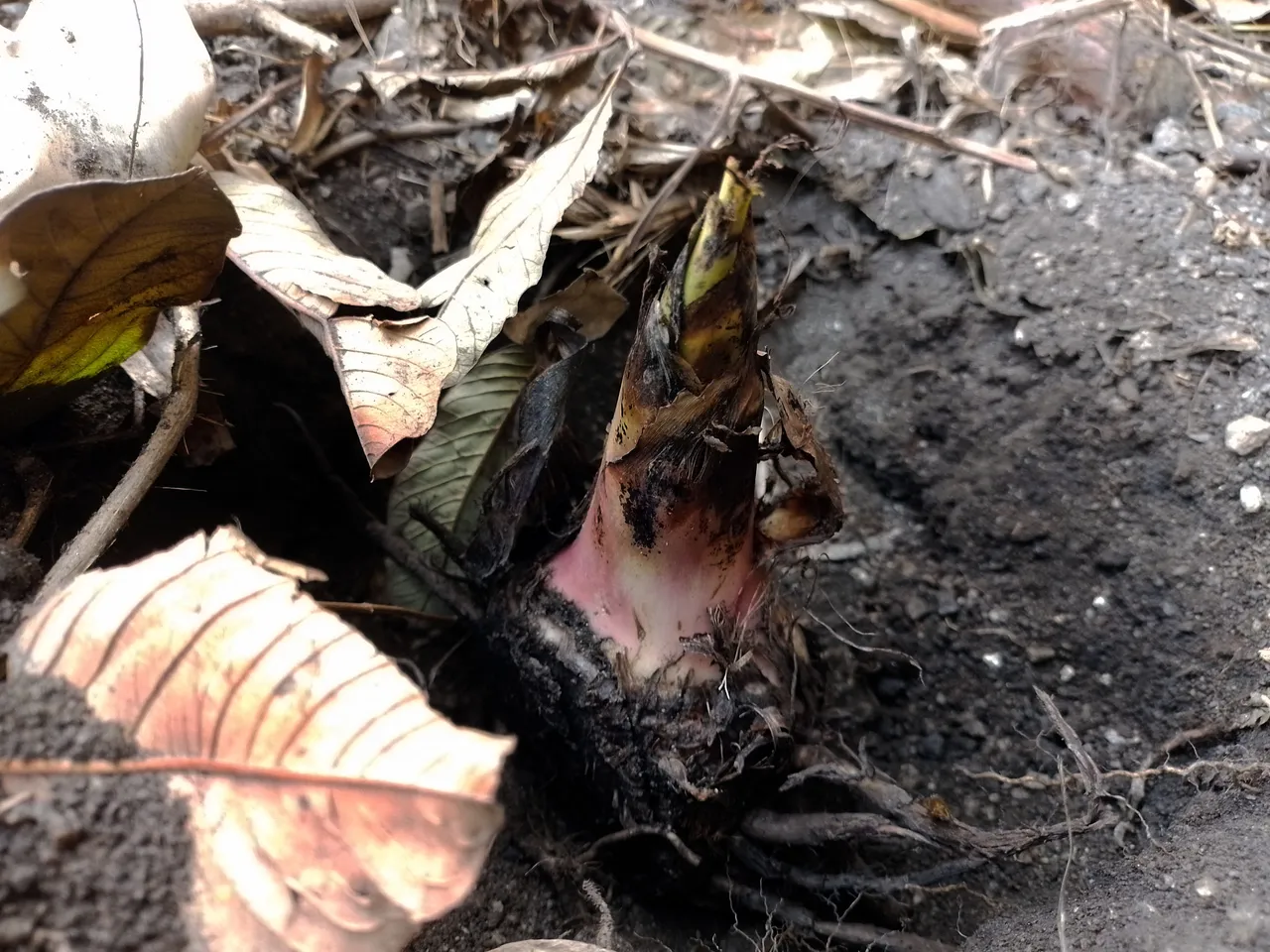 |
|---|
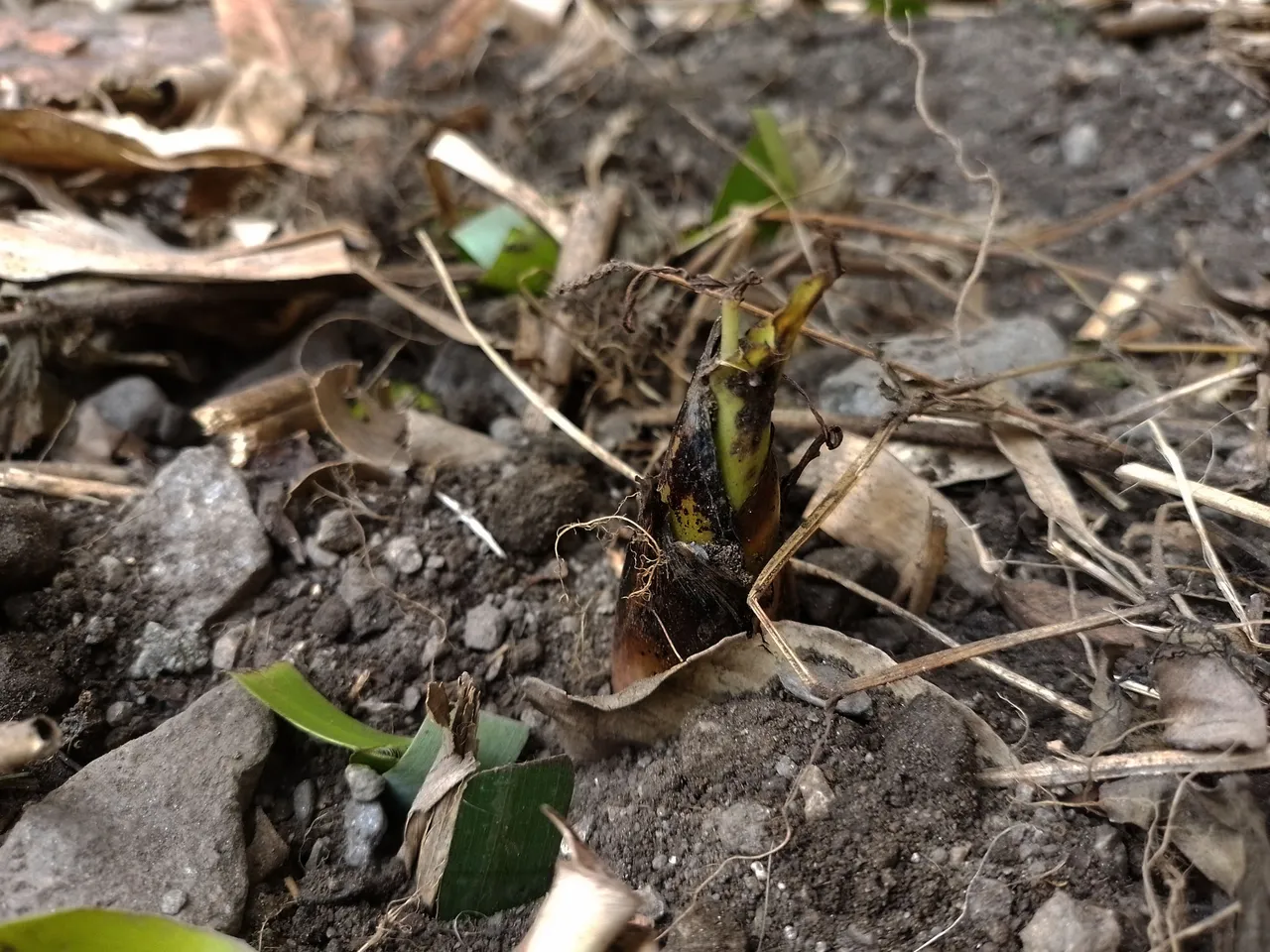
Here below you can see another bigger son I planted, which has a large size and will take less time to produce new leaves and continue its growth.
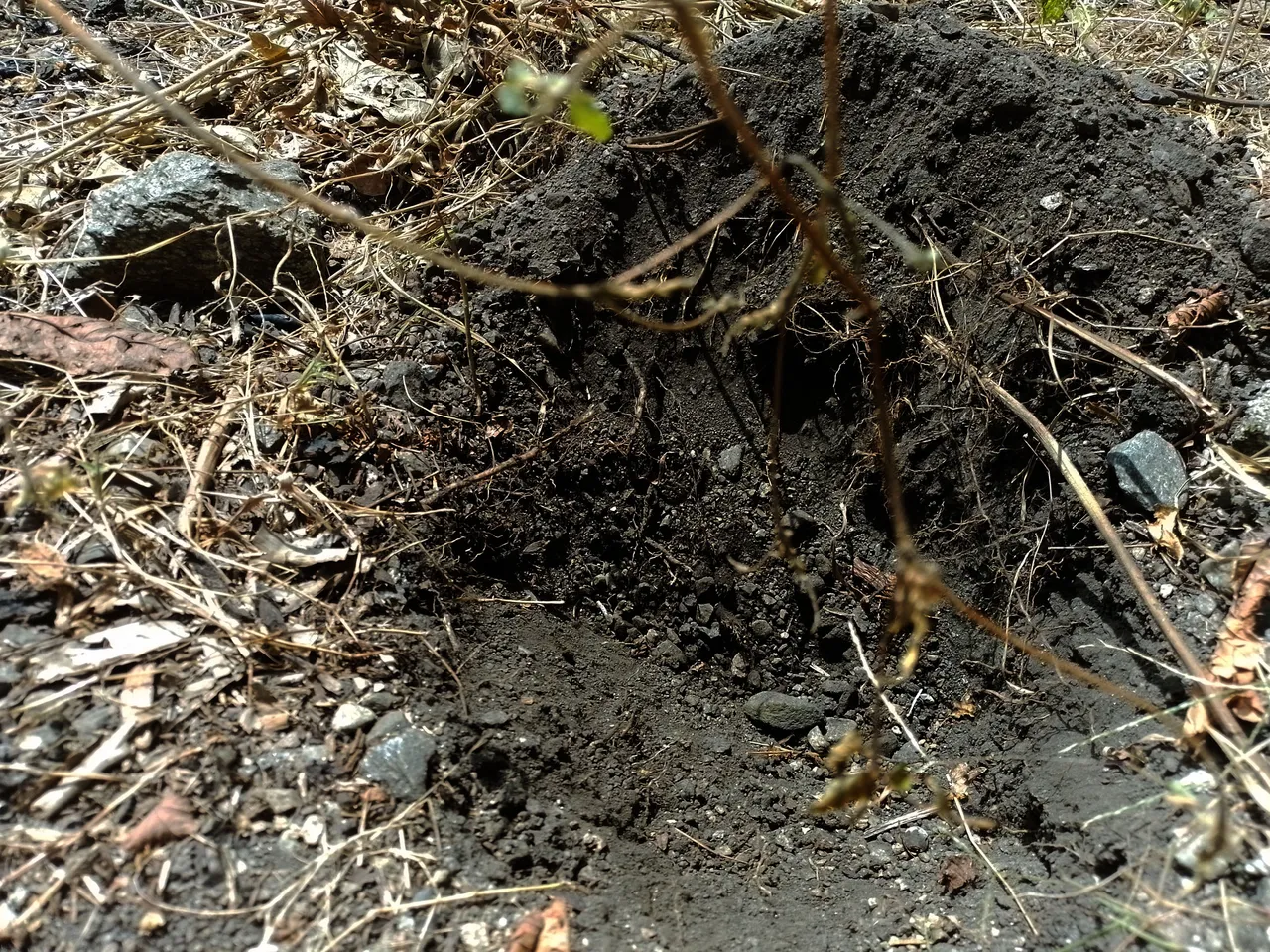 | 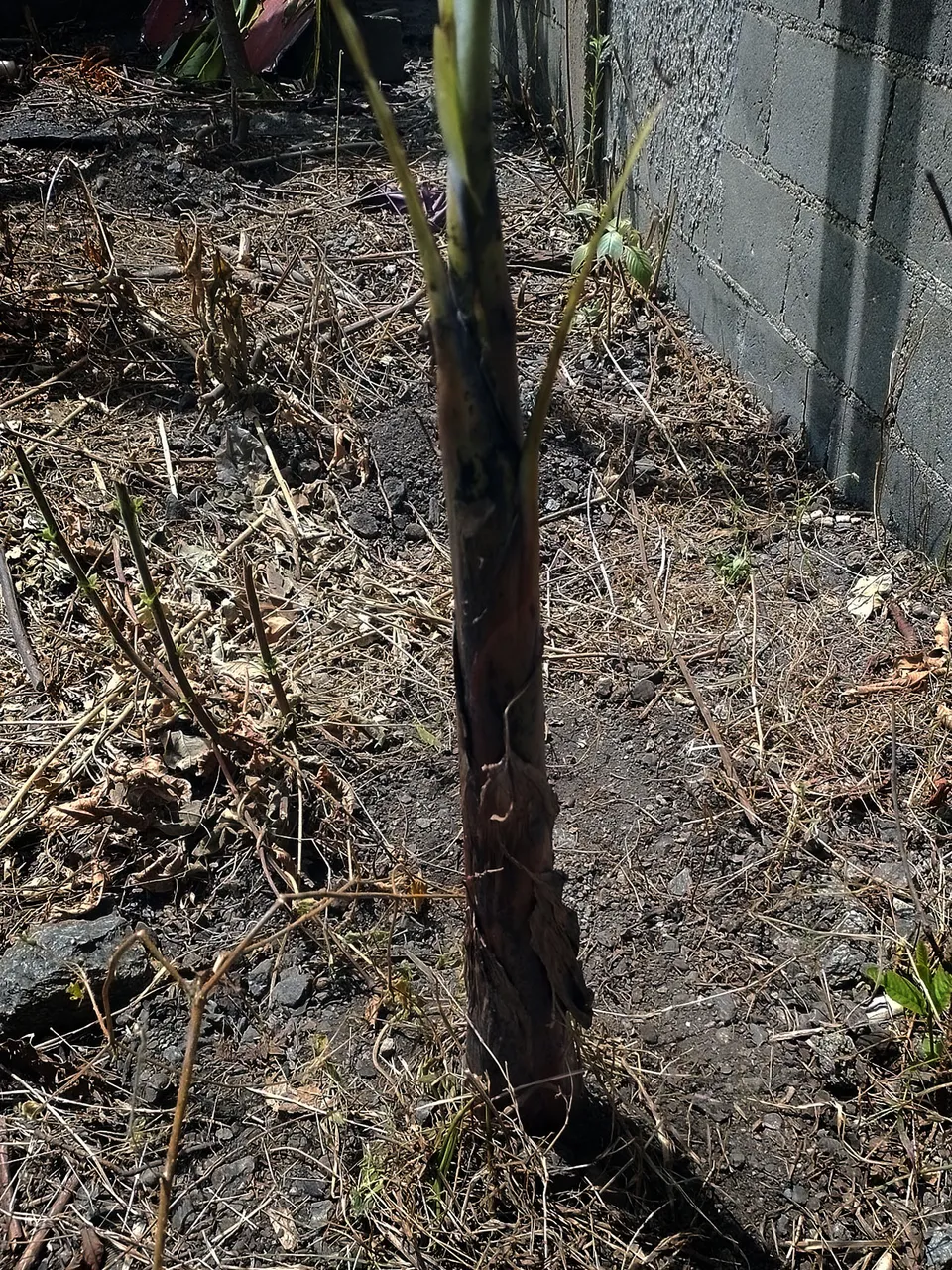 |
|---|
After planting all the seedlings in the available area of my plot, I got a hose and started watering all the future plants with plenty of water.
It is a dry and very hot season, so it is important to make sure that all the plants are well hydrated so that they can grow despite the difficult circumstances for these plants.
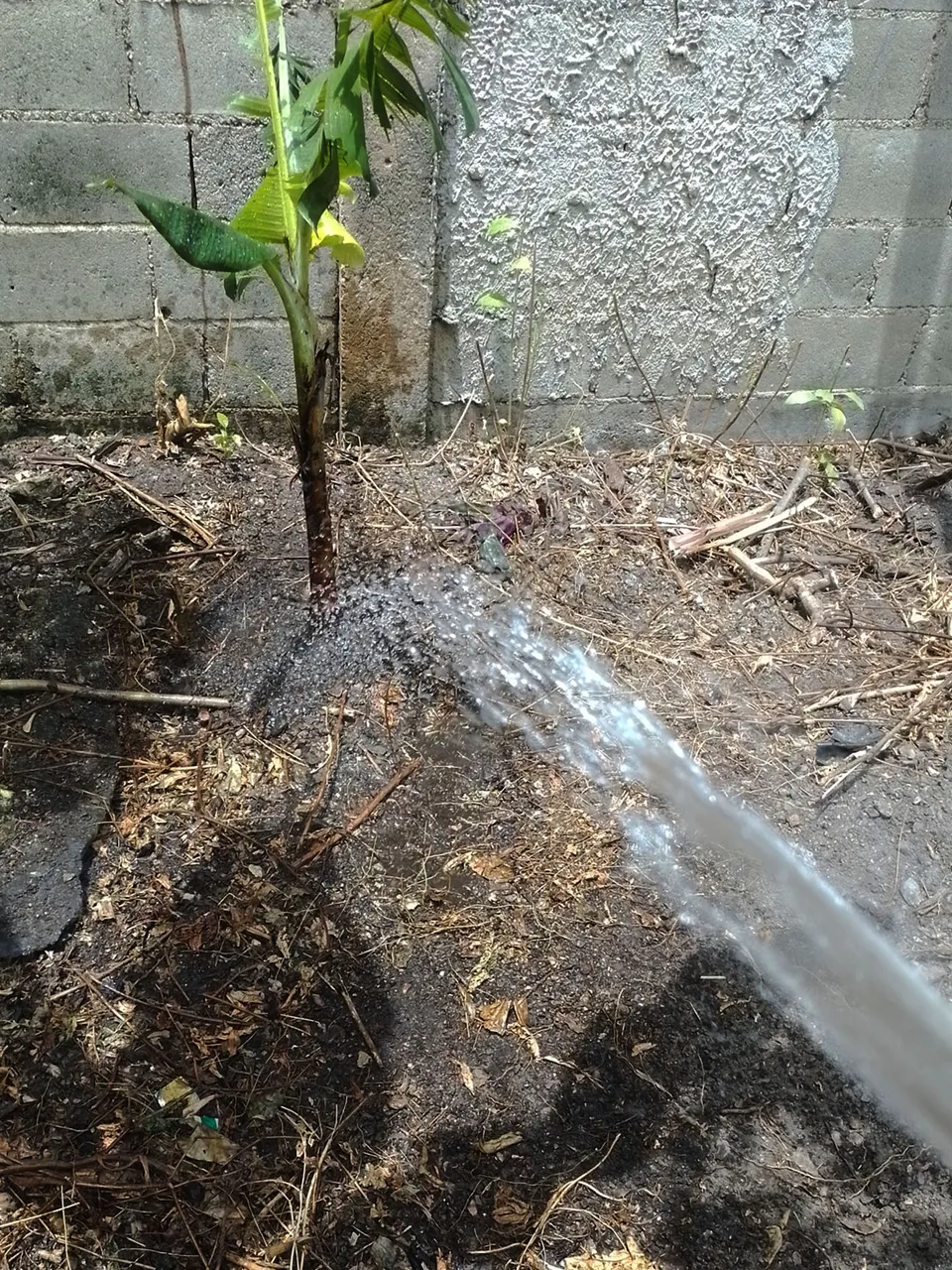 | 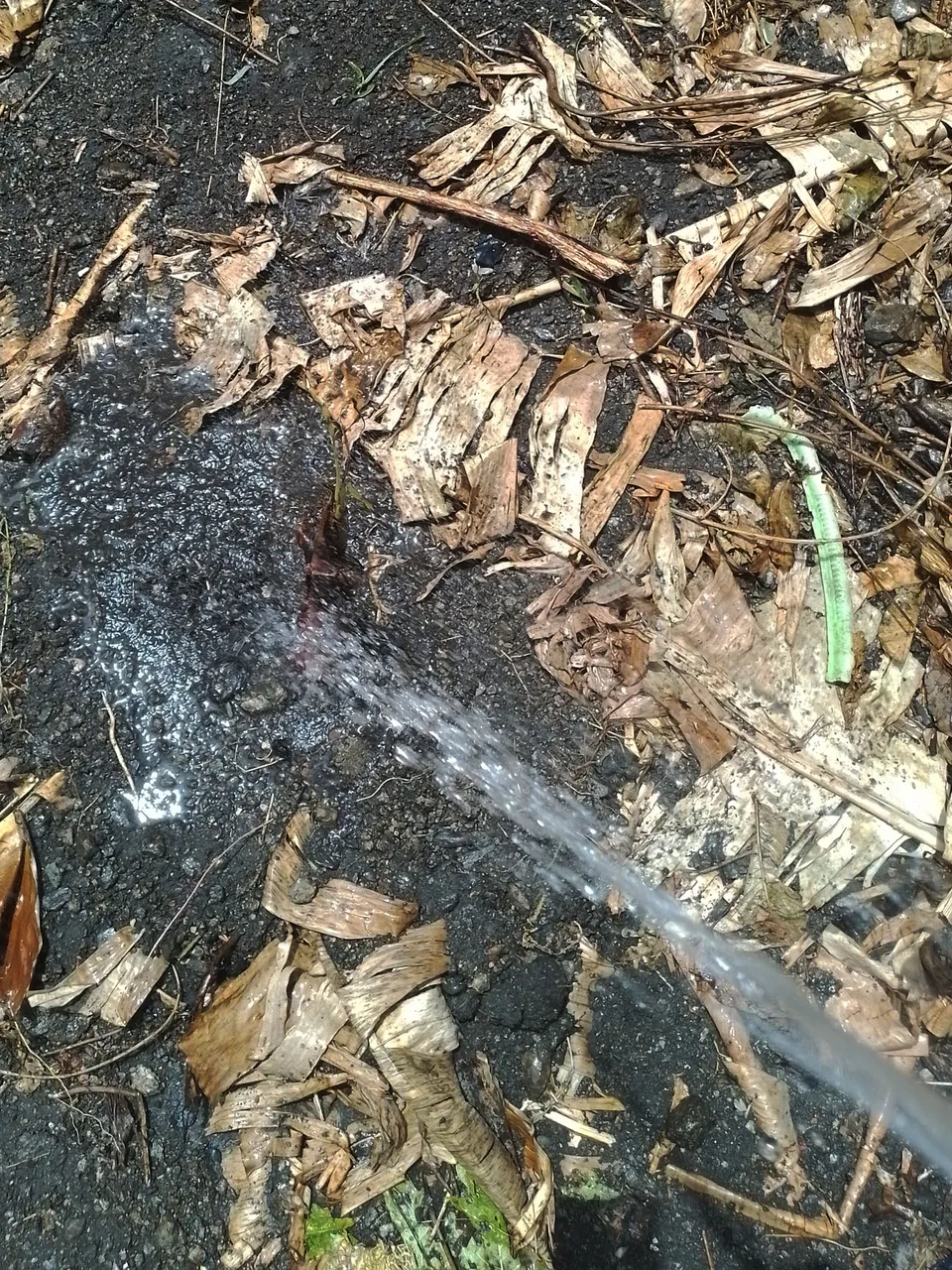 |
|---|
I managed to plant a lot of new plants, now I just have to wait for them to bear fruit and repeat the process.
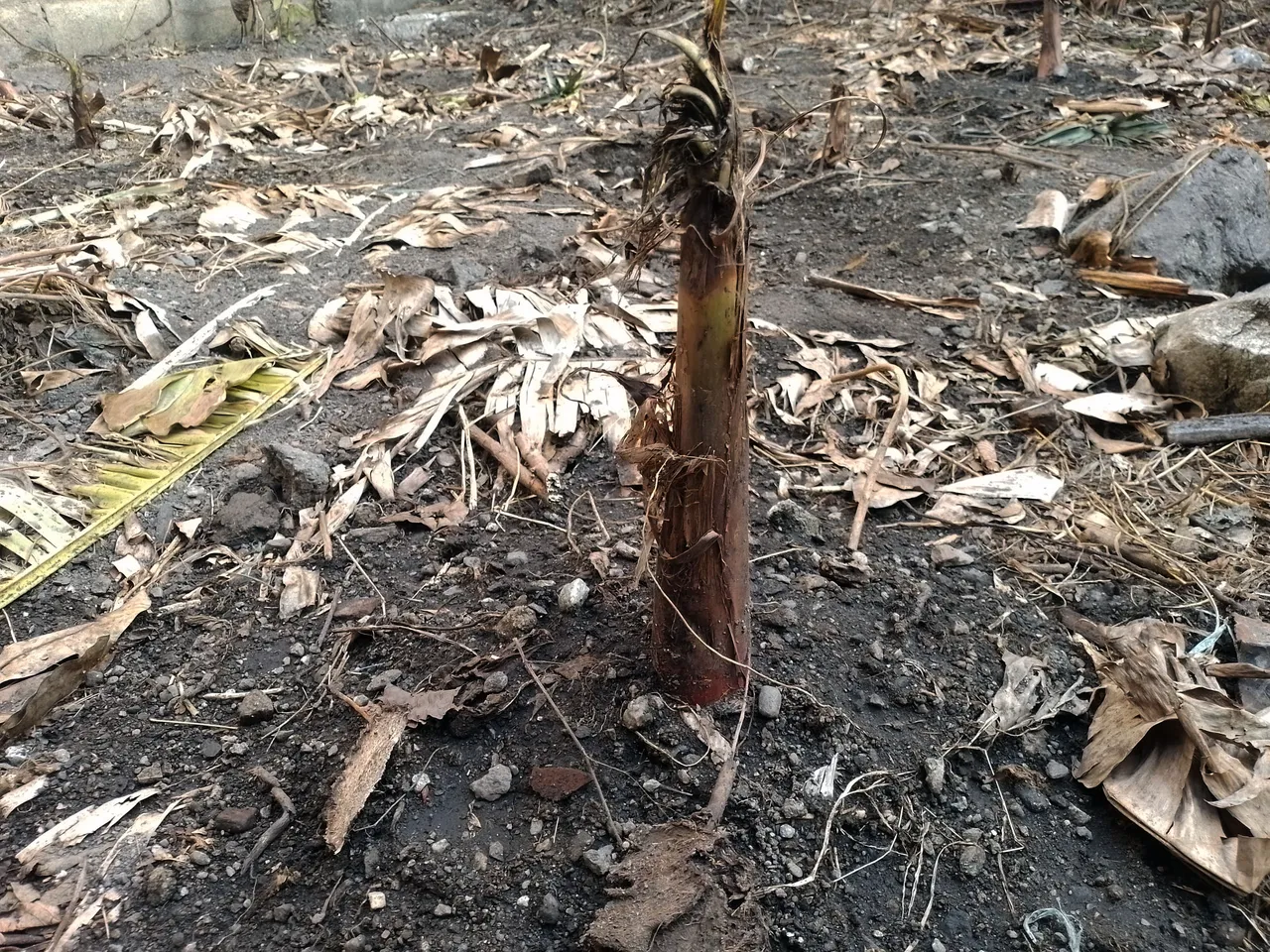 | 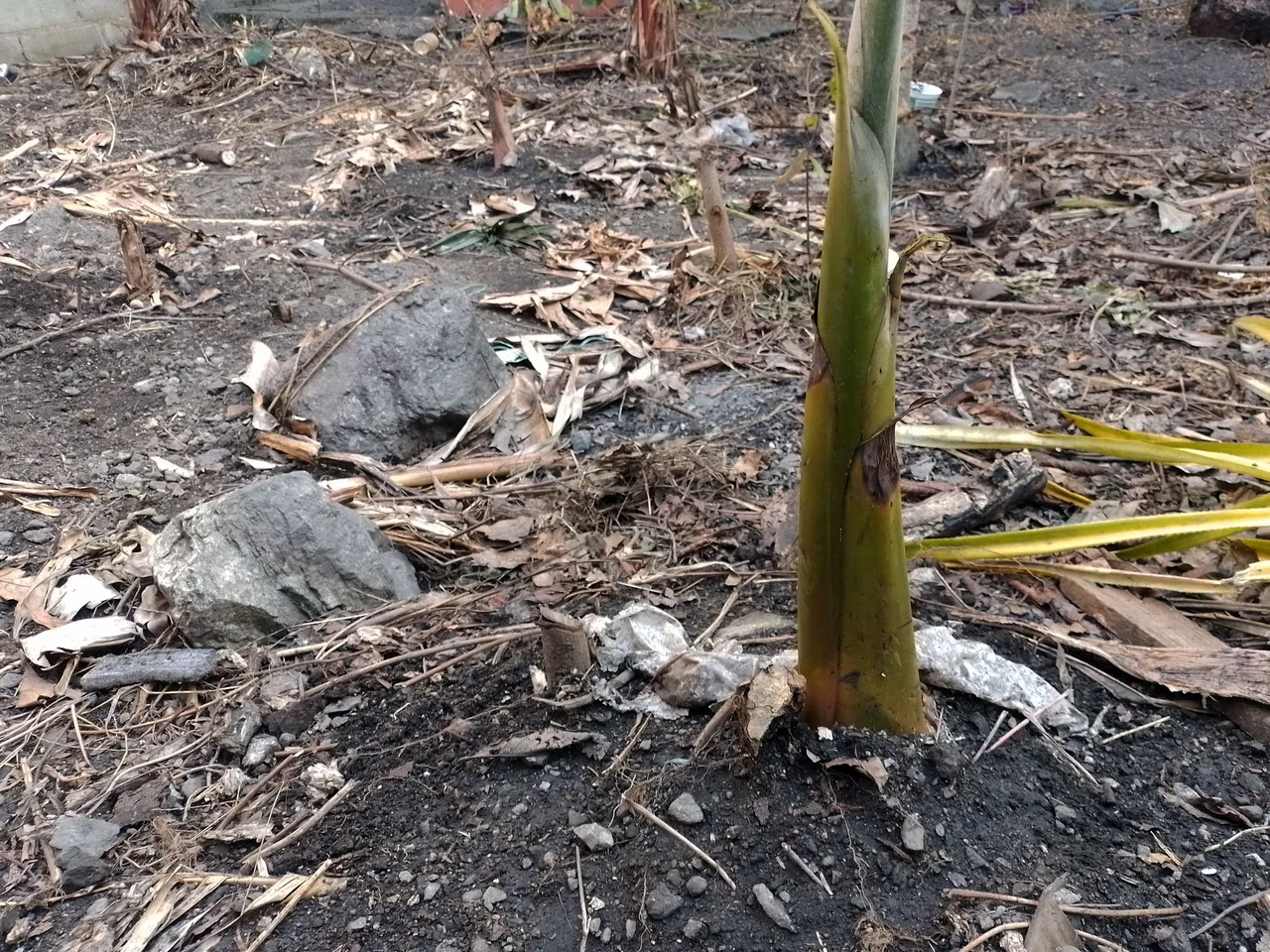 |
|---|
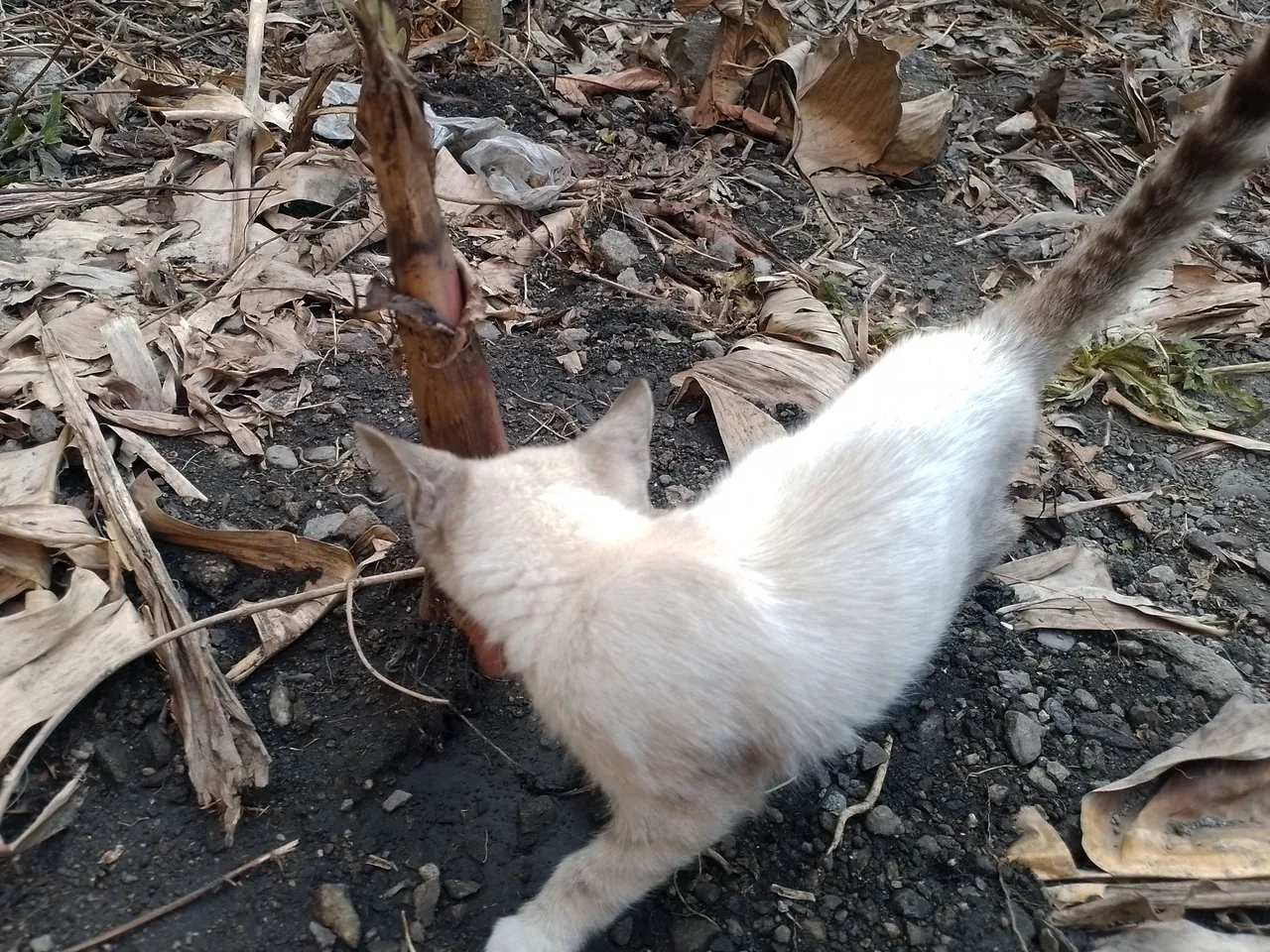 | 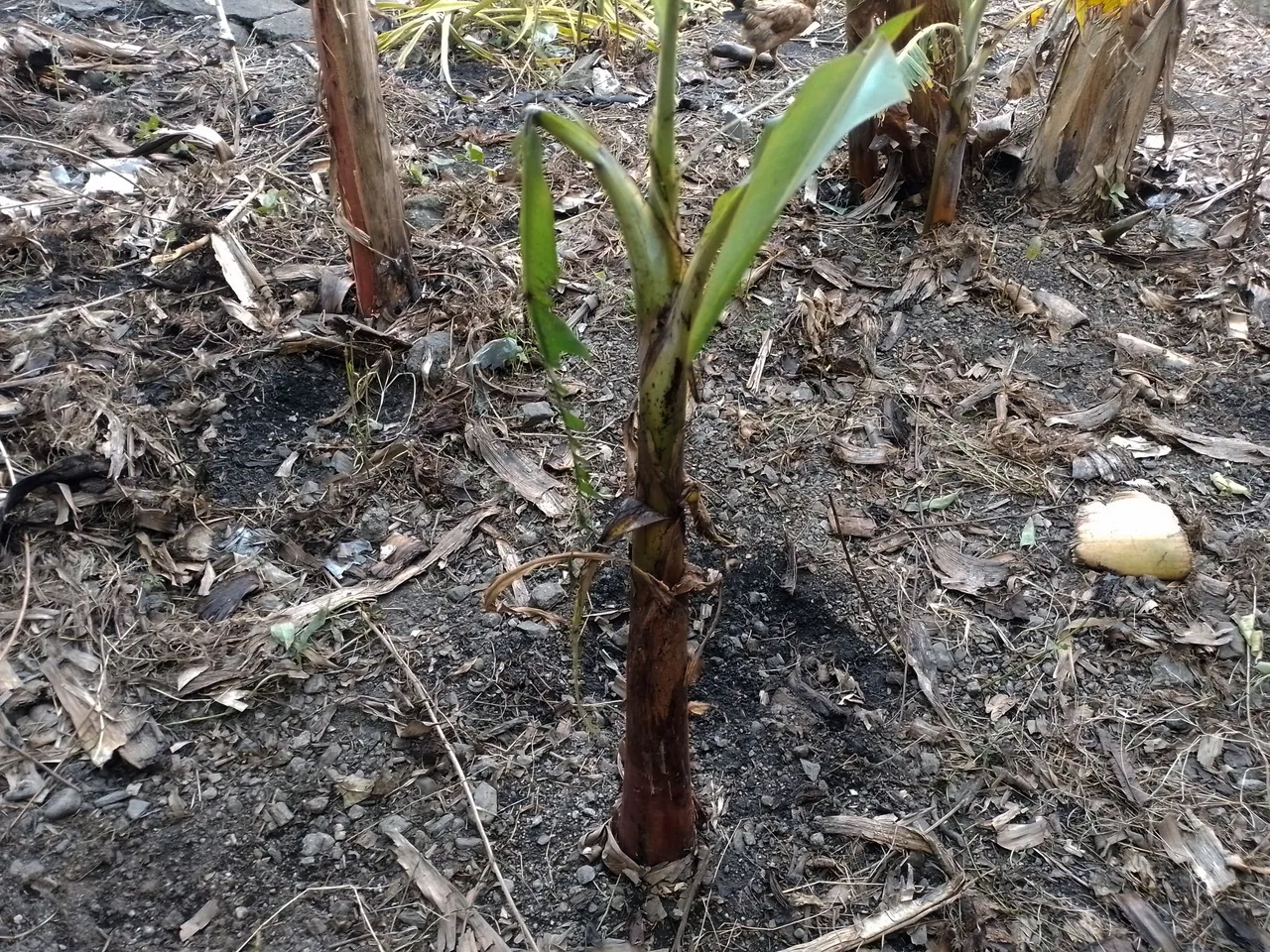 |
|---|
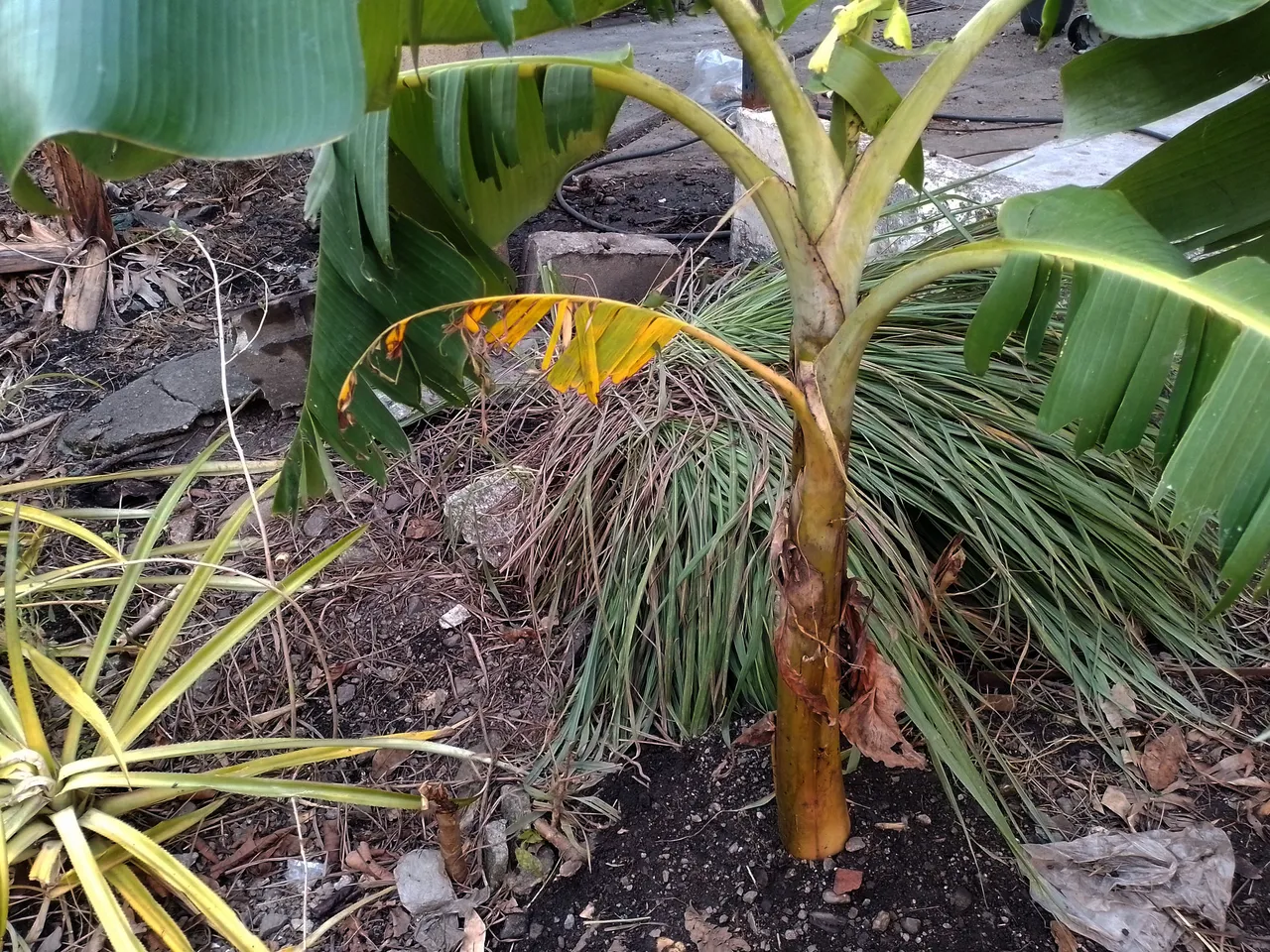
Regarding this last offspring that I planted, it is being very beneficial because one of the hens made a nest down there, at the base of the banana tree.
This is a very good thing because even though she made a nest in the open air, the banana plants will give her shade and protect her from rain, in case it happens again.
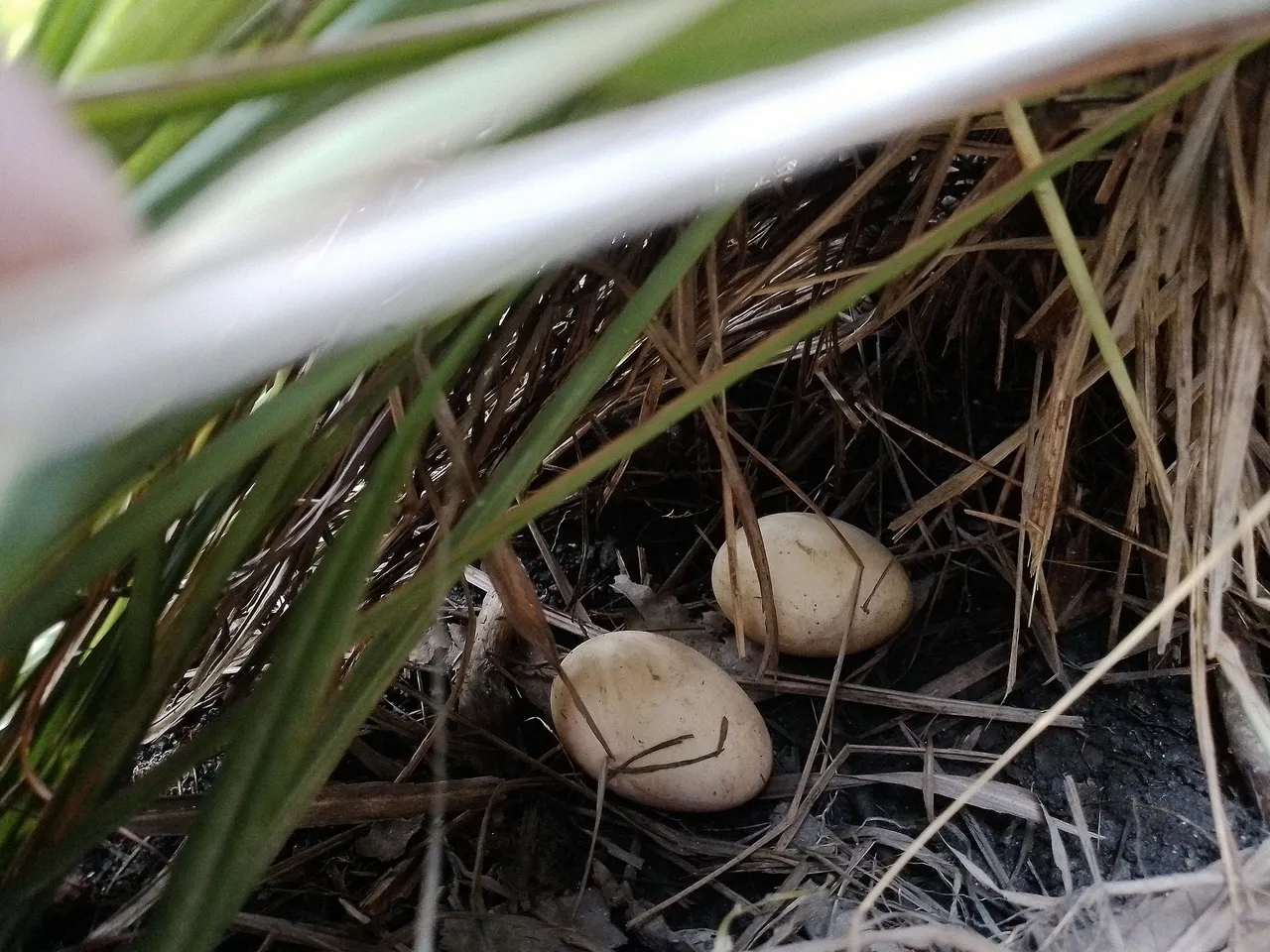
This is how my patio looked with all the plants planted. The patio looks lush and with a lot of organic matter in the soil. Before it was a bit dry, but I left all the waste leaves, plants and other debris on the ground to decompose and complete the natural cycle of organic matter, thus achieving a sustainable planting, without chemicals.
Again I have to wait for the plants to grow and produce their fruit. It sounds simple, but no, everything takes a process and you have to take care of the plants; remove dry leaves, eliminate pests, water them regularly and eliminate unnecessary offspring.
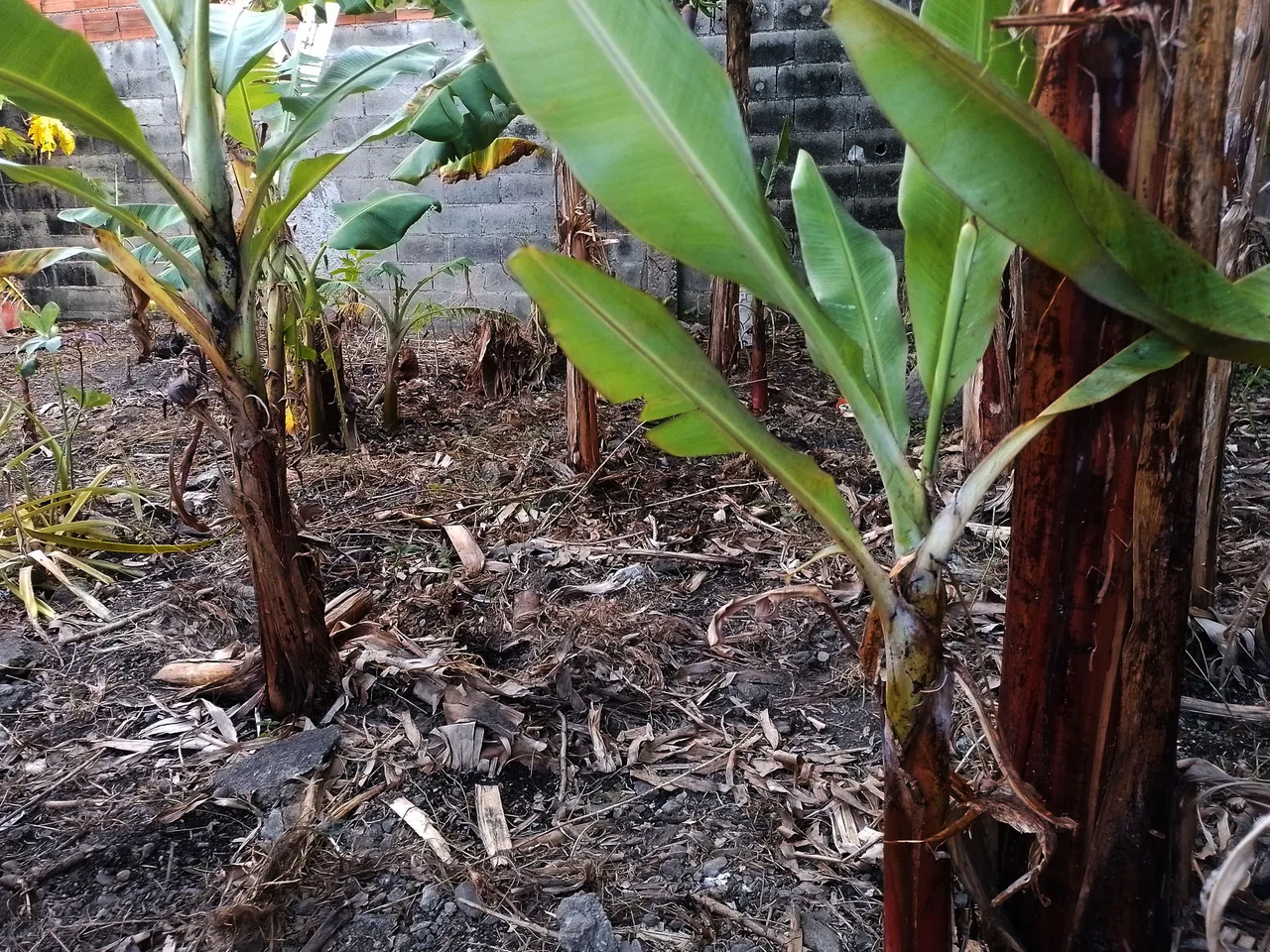
Well friends, that's all for now. I hope you have enjoyed my publication. I invite you to leave your opinions below in the comments, as always I will be happy to read them.
Thank you very much for taking the time to read my post. Without further ado, I bid you farewell...
See you next time!

Hace relativamente poco les mostré parte de la cosecha que había logrado recolectar. Entre las cosas que logré cosechar les mencioné un buen racimo de banana, un montón de mandioca y unos pequeños ajos.
Pueden leer más sobre esa publicación siguiendo este enlace:
@gaboamc2393/cleaning-and-harvesting
Recientemente coseché 3 enormes Calabazas también, conocidas en mi país como Auyama. Son verduras muy ricas que se pueden usar para distintas recetas. En este año se dieron muy bien así que estoy contento con mi cosecha y planeo seguir sembrando.
 |  |
|---|

Algo que también tenía pendiente reproducir eran las distintas variedades de platanos o bananas que tenía en mi patio.
Estas enormes plantas se reproducen a partir de pequeños brotes que salen de la tierra, muy cerca de la raíz de la planta madre. Abajo pueden ver dos hijos pequeños que salieron.
 |  |
|---|
Estos hijos con el tiempo crecen y van tomando forma de plantas de banano, aunque si no se separan de la planta madre van a competir por los nutrientes del suelo y no permitirán a la planta madre dar buenos frutos.
Por eso, se aconseja retirar a los hijos innecesarios y resembrar solamente los que se puedan, para que haya cosecha para el próximo ciclo.
 |  |
|---|
En mi caso yo retiré más de 20 hijos de mis plantas. Algunos los deseché y otros los preparé para sembrar.
En este caso, solo seleccioné 12 para resembrarlos a lo largo de mi patio, para mantener la producción de manera continua. No lo había hecho porque no había llovido, de modo a la mañana siguiente de la primera lluvia que hizo en estos últimos días, retiré todos esos retoños.

Aquí un breve paréntesis para algo que deben de tener muy en cuenta a la hora de trabajar cerca de las plantas de plátano.
Estas plantas suelen atraer a muchos gusanos e insectos que pueden ser perjudiciales.
En este caso, me encontré varios de estos gusanos con púas a lo largo de su cuerpo. Sin pequeños pero si los tocas te dará una fiebre terrible, con la que no podrás seguir trabajando en el huerto, así que mucho cuidado con los insectos que encuentren.
 |  |
|---|
Volviendo al tema de la siembra, después de preparar todos los hijos de plátano, hice los agujeros en la tierra para sembrarlos. Deben ser profundos, para que logre echar buenas raíces la planta y así crezca fuerte.
Sembré los distintos tipos de retoños, tanto los pequeños como los grandes. En este caso, al ser un retoño pequeño, tardará más en crecer que otros hijos.
 |  |
|---|

Aquí abajo pueden ver otro hijo más grande que sembré, que tiene un gran tamaño y tardará menos en producir hojas nuevas y continuar con su crecimiento.
 |  |
|---|
Después de sembrar todos los retoños en el área disponible de mi terreno, busqué una manguera y comencé a regar todas las futuras plantas con bastante agua.
Es época de sequía y mucho calor, así que hay que procurar que todas las plantas estén bien hidratadas para que crezcan a pesar de las circunstancias tan complicadas para estas plantas.
 |  |
|---|
Un montón de nuevas plantas logré sembrar, ahora simplemente me toca esperar a que den su fruto y volver a repetir el proceso.
 |  |
|---|
 |  |
|---|

Respecto a este último hijo que sembré, está siendo muy beneficioso porque una de las gallinas hizo nido ahí abajo, en la base del plátano.
Es algo muy bueno porque aunque hizo nido al aire libre, las plantas del plátano le darán sombra y la protegerán de lluvia, en caso de que ocurra otra vez.

De este modo así quedó mi patio con todas las plantas sembradas. El patio se ve frondoso y con mucha materia orgánica en el suelo. Antes estaba un poco seco, pero todos los desperdicios de hojas, plantas y demás las dejé en el suelo para que se descompongan y se cumpla el ciclo natural de la materia orgánica, logrando así una siembra sostenible, sin químicos.
Nuevamente debo esperar a que crezcan las plantas y produzcan su fruto. Suena sencillo, pero no, todo lleva un proceso y hay que cuidar las plantas; quitarle las hojas secas, eliminar plagas, regarlas regularmente y eliminar hijos innecesarios.

Bien amigos, esto ha sido todo por ahora. Espero que mi publicación haya sido de su agrado. Los invito a dejar sus opiniones abajo en los comentarios, como siempre estaré encantado de leerlos.
Les agradezco mucho que se tomaran el tiempo de leer mi publicación. Sin más que agregar, me despido entonces...
¡Hasta la próxima!
